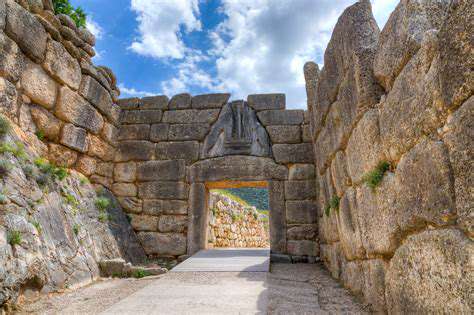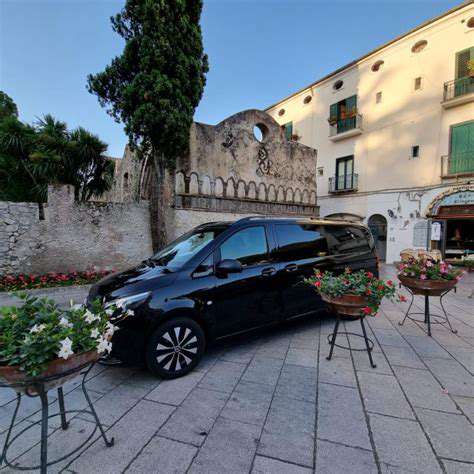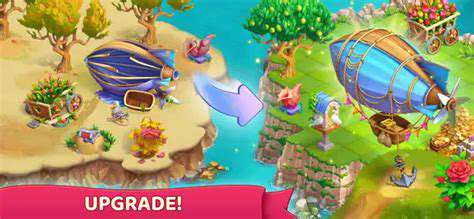Exploring Ancient Ruins in Greece

Unveiling the Palace of Knossos
Standing proudly on the island of Crete, the Palace of Knossos remains one of the most impressive architectural achievements of the ancient world. What makes this complex truly remarkable is how its interconnected rooms and courtyards reflect a level of urban planning far ahead of its time. Walking through its ruins today, one can almost hear the echoes of a civilization that thrived here over 3,000 years ago. The vibrant frescoes adorning the walls - depicting everything from ceremonial bull-leaping to graceful dolphins - offer tantalizing clues about Minoan daily life and spiritual beliefs.
When Sir Arthur Evans began excavating the site in 1900, he uncovered more than just crumbling walls. The discovery of intricate gold jewelry, sophisticated plumbing systems, and extensive storage facilities revealed a society with surprising technological sophistication. Particularly fascinating are the palace's storerooms, where archaeologists found evidence of an extensive trade network that connected Crete with Egypt and the Near East. These findings continue to challenge our assumptions about Bronze Age capabilities.
Exploring the Mycenaean Influence
As the Minoan civilization began to decline around 1450 BCE, a new power emerged from mainland Greece. The Mycenaeans brought with them a distinctly different cultural approach, favoring fortified citadels over open palace complexes. Their arrival marked a significant shift in Aegean politics and art, with their influence visible in everything from pottery styles to burial practices. At Knossos itself, archaeologists have identified Mycenaean architectural elements superimposed on earlier Minoan structures.
The Mycenaeans weren't just warriors - they were master traders whose commercial networks stretched from Italy to the Levant. Their clay tablets, inscribed with an early form of Greek known as Linear B, provide our first written records of Hellenic civilization. These documents reveal a highly organized society with complex administrative systems for tracking everything from livestock to religious offerings. The tablets' survival offers us priceless insights into how these ancient people managed their economy and government.
What's particularly intriguing is how Mycenaean culture both adopted and adapted Minoan traditions. Their art incorporated Minoan motifs but gave them a distinctly more martial character. Their religious practices blended indigenous Greek elements with influences from Crete. This cultural synthesis created something entirely new - a hybrid civilization that would eventually give rise to classical Greece. Ongoing excavations continue to uncover new evidence of this fascinating cultural interchange.
Unearthing the Secrets of Delphi: Oracle of the Ancient World
Delphi's Archaeological Significance
Perched dramatically on the slopes of Mount Parnassus, Delphi was far more than just a religious site - it functioned as the ancient world's most prestigious think tank. For over a millennium, leaders from across the Mediterranean world traveled to this remote location seeking guidance on matters ranging from colonial expeditions to personal dilemmas. The archaeological remains tell a story of continuous evolution, with each generation adding new monuments and temples to honor Apollo.
The site's layout itself reveals much about ancient Greek values. The Sacred Way, winding up the mountainside past treasuries and monuments, was designed to impress visitors with the wealth and power of various city-states. The theater and stadium demonstrate how religious festivals blended with athletic and artistic competitions. Perhaps most remarkably, Delphi's extensive inscriptions preserve hundreds of decisions made by the Amphictyonic Council, offering us an unprecedented window into ancient international relations.
The Oracle of Delphi and Prophecy
The Pythia's prophecies weren't simply fortune-telling - they represented a sophisticated form of divine diplomacy. Before consulting the oracle, petitioners first had to purify themselves in the Castalian Spring and pay substantial fees. The questions themselves were carefully vetted by priests, who then reformulated them for the Pythia. Her responses, delivered in a trance-like state, were famously ambiguous - allowing for multiple interpretations depending on political needs.
Modern research suggests the Pythia's altered state may have been induced by natural gases rising from geological faults beneath the temple. What's undeniable is the oracle's tremendous influence - cities founded colonies, kings launched wars, and individuals made life-changing decisions based on her pronouncements. The fact that Delphi maintained this prestige for centuries speaks volumes about its perceived legitimacy in the ancient world.
Delphi's Legacy and Modern Relevance
Today, Delphi continues to captivate visitors not just as an archaeological site, but as a place where history feels palpably alive. The well-preserved ruins allow us to walk in the footsteps of ancient pilgrims, while the spectacular mountain setting helps explain why the Greeks considered this the center of the world. The site's museum houses breathtaking artifacts like the Charioteer of Delphi, whose hauntingly realistic features seem to bridge the gap between past and present.
Delphi's true legacy lies in how it embodied the Greek pursuit of knowledge and self-understanding. The famous maxims Know thyself and Nothing in excess inscribed at the temple remind us that ancient wisdom still has relevance today. As ongoing excavations uncover new aspects of the site, we gain fresh perspectives on how the ancient Greeks grappled with questions of fate, free will, and humanity's place in the cosmos.
Returning to significant places from our past often stirs deep emotions. The experience can be surprisingly powerful - familiar scents trigger forgotten memories, unchanged landmarks measure the passage of time, and the contrast between what remains and what has changed prompts reflection. These journeys backward through time remind us that history isn't just something we study - it's something we carry within us.
From Classical Athens to Roman Influence: Exploring the Ruins of Ancient Corinth
The Legacy of Athenian Democracy
Ancient Corinth's relationship with Athens was complex - simultaneously admiring and resisting its powerful neighbor. While Corinth never fully embraced Athenian-style democracy, excavations reveal how Athenian ideas about citizenship and public debate influenced Corinthian society. The agora's layout, with spaces designed for public discussion, suggests some adoption of democratic principles. Corinthian pottery and art from this period also show clear Athenian influence, though always with a distinctive local flavor.
The Rise and Fall of Corinthian Power
Corinth's geographical position made it a natural crossroads - and a constant prize. The city's wealth came from controlling both land and sea trade routes, with its famous diolkos (a paved portage road) allowing ships to bypass the dangerous voyage around the Peloponnese. This strategic advantage brought tremendous prosperity, evidenced by the lavish Temple of Apollo and numerous fountains gracing the city. However, it also made Corinth a target in the endless power struggles between Greek city-states.
The city's destruction by the Romans in 146 BCE marked one of the most dramatic moments in Greek history. For a century, the site lay abandoned - a stark warning about the consequences of resisting Rome. When Julius Caesar refounded Corinth in 44 BCE, he created something fundamentally different - a Roman colony superimposed on Greek foundations.
Roman Influence and Urban Transformation
The Roman-era ruins at Corinth tell a fascinating story of cultural fusion. The forum combines Greek and Roman architectural elements, while Latin inscriptions appear alongside Greek ones. The city's infrastructure - including an elaborate aqueduct system and public baths - reflected Roman engineering prowess. Yet Greek language and many traditions persisted, creating a unique hybrid culture. This blending is perhaps best embodied by the Corinthian order of architecture - a Roman adaptation of Greek styles that became one of the classical world's most enduring legacies.
Exploring the Archaeological Evidence
Walking through Corinth's archaeological site today offers physical connections to multiple historical layers. The Temple of Apollo's Doric columns stand as silent witnesses to the city's Greek past, while the extensive Roman forum speaks to its imperial phase. Particularly poignant are the everyday objects - cooking utensils, children's toys, and workshop tools - that remind us these ruins were once home to real people with ordinary lives. The museum's collection of Corinthian pottery, famous throughout the ancient world for its quality and beauty, showcases the city's artistic achievements across centuries.
What makes Corinth especially valuable to archaeologists is its continuous occupation from prehistoric times through the Byzantine period. This long timeline allows researchers to track cultural changes with unusual precision, making the site a crucial case study for understanding how civilizations evolve and adapt over time.







![Exploring the Temples of Southeast Asia [Cultural Guide]](/static/images/27/2025-05/Myanmar27sGoldenPagodas3AASymphonyofSpirituality.jpg)



